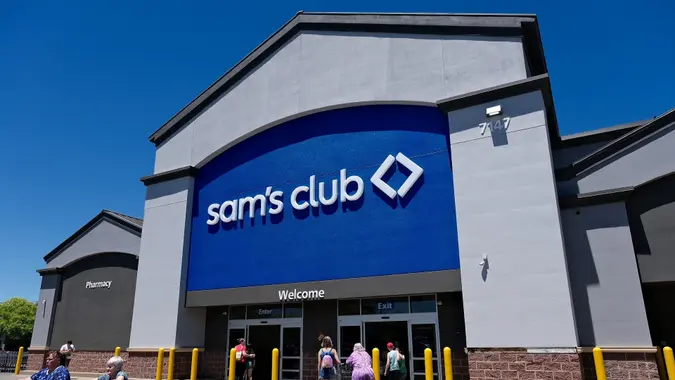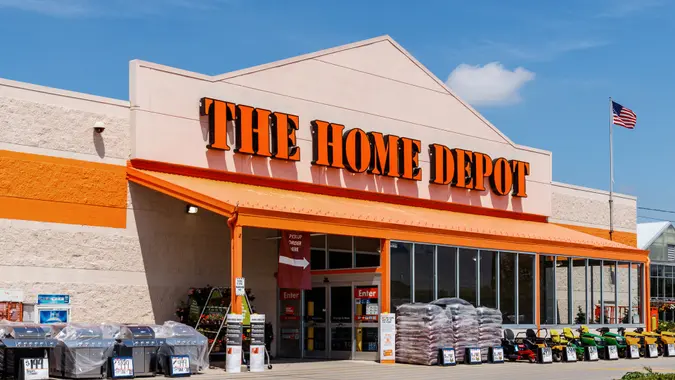Advertiser Disclosure
GOBankingRates works with many financial advertisers to showcase their products and services to our audiences. These brands compensate us to advertise their products in ads across our site. This compensation may impact how and where products appear on this site. We are not a comparison-tool and these offers do not represent all available deposit, investment, loan or credit products.
6 Bad Habits That Hike Up Your Grocery Bill
 Written by
Cody Bay
Written by
Cody Bay
 Edited by
Heather Taylor
Edited by
Heather Taylor

Commitment to Our Readers
GOBankingRates' editorial team is committed to bringing you unbiased reviews and information. We use data-driven methodologies to evaluate financial products and services - our reviews and ratings are not influenced by advertisers. You can read more about our editorial guidelines and our products and services review methodology.

20 YearsHelping You Live Richer

Reviewed by Experts

Trusted by Millions of Readers
$150-$300: That’s the average amount of money per month, per person that people are spending on food, according to the budgeting app Mint.com. That estimated target varies by age and location, but whoever and wherever you are, staying within your grocery budget may be causing some furrowed brows lately.
Groceries haven’t gotten cheaper either. The prices of meats, poultry, fish and eggs rose 11.3 percent by Jan. 2023 over a 12-month period. Not surprisingly, shopping behaviors are also shifting, with more shoppers hunting for deals and thinking twice about what they buy and where they buy it.
So what are those “bad” habits we can find between the lines of that eye-popping grocery store receipt? GOBankingRates consulted Joel Larsgaard, one half of the “How To Money” podcast, in which two best friends talk about personal finance over a craft beer, to help break down the things we can stop and start doing to feed ourselves for less.
Going To the Wrong Store
“Where you shop makes a big difference. If you’re going to the more expensive places, it’s worth checking out some of the stores that specialize in discounting,” Larsgaard said.
Places like Trader Joe’s, Lidl or Aldi are great places to start. Especially for pantry items that are available anywhere, you’re probably paying a premium for them at a fancy grocery store when you can get similar items for cheaper elsewhere. “Try these on for size, and you’ll be shocked at how much money you can potentially save,” he said.
No Plans
“Not planning your meals out can lead to aimlessness,” Larsgaard said. Aimless shopping leads to buying stuff you don’t need, which in turn leads to waste, in terms of both food and money. An estimated 30-40% of the food produced in the United States gets thrown out, according to the USDA, while the average family of four wastes nearly $1,500 worth of food each year.
When formulating a meal plan, include buying ingredients you can stretch across multiple meals in your plan. Think about how you’ll repurpose leftovers into lunch or another meal, like turning tonight’s extra chicken into tomorrow’s tacos.
Planning ahead should also include arming yourself with cash-back apps. Apps like Upside, for example, allow you to earn cash back on a wide range of products at hundreds of stores, simply by scanning your receipts after purchase.
You’re Still Shopping in the Store?
Curbside pickup may be one of the pandemic habits that will end up sticking around for many consumers, for reasons that go well beyond avoiding shared air space. Not only is it extremely convenient, Larsgaard said, it helps keep your shopping focused.
“When we go into the store, we’re more susceptible to the end cap displays or a sale on something, and we end up putting a bunch of other things in our cart that we didn’t necessarily go in there to purchase,” he said. Shopping online and picking up curbside “is a time saver for one, and it’s going to ensure that you’re only going to get the stuff on your list.”
Even if the store charges a fee for pickup, it’s usually minimal and would likely be offset by the money you’re saving.
Are You Really Going To Eat All That?
“As Americans, we’re prone to eating too much in general,” Larsgaard said. Being more mindful about portion sizes and shopping only for the amount you want to eat can help save you money upfront. Portion the extra quantities into leftovers in the fridge or freezer right away.
It doesn’t help that grocery stores and warehouse retailers like Costco are great at selling us stuff in oversized quantities. But it’s only a good deal if it doesn’t get wasted, so just make sure that the portions of perishables you’re not going to consume right away get divided and saved in the freezer, labeled by name and date.
Going Heavy on Meat and Dairy
While prices are up across food categories, meat and dairy items like bacon, butter and milk have caused significant sticker shock recently, according to the UN Food and Agriculture Organization’s Food Price Index. These also tend to be food groups that many Americans habitually plan their meals around.
“I think there’s a problem with too much meat in our diets in general,” said Larsgaard, who admits to being a meat lover himself. “Can we have one meatless meal a week? How about skipping the bacon?”
What’s more, the greenhouse gas emissions caused by animal food production are twice as much as that of plant-based foods, according to a recent study. So in addition to being better for our health and our wallets, cutting down on these items is also a good habit for the planet.
The Name-Brand Reflex
A big mistake people make, Larsgaard said, is automatically reaching for the name-brand items at the grocery store. “Advertising sticks in our brain and we’re prone to buying name brands. If your gut reaction is to go for a name brand, pause and give it a second thought,” he said.
He points out that there’s been a proliferation of store brands that offer equal or better quality than name brands, including organic options, and that you can save as much as 20%-40% on the price.
Plus, many stores have money-back guarantees if you don’t like them, so it doesn’t hurt to give them a try if you’re not sure.
More From GOBankingRates
Share This Article:




You May Also Like

Car Ownership Costs Just Dropped -- Here's What's Behind the $719 Decline
October 04, 2025
6 min Read

10 Vacations That Need To Be on Every Middle-Class Retiree's Bucket List
September 25, 2025
6 min Read









Best Ways To Save Your Money
Make your money work for you
Get the latest news on investing, money, and more with our free newsletter.
By subscribing, you agree to our Terms of Use and Privacy Policy. Unsubscribe at any time.


Thanks!
You're now subscribed to our newsletter.
Check your inbox for more details.



Sending you timely financial stories that you can bank on.
Sign up for our daily newsletter for the latest financial news and trending topics.
For our full Privacy Policy, click here.
Looks like you're using an adblocker
Please disable your adblocker to enjoy the optimal web experience and access the quality content you appreciate from GOBankingRates.
- AdBlock / uBlock / Brave
- Click the ad blocker extension icon to the right of the address bar
- Disable on this site
- Refresh the page
- Firefox / Edge / DuckDuckGo
- Click on the icon to the left of the address bar
- Disable Tracking Protection
- Refresh the page
- Ghostery
- Click the blue ghost icon to the right of the address bar
- Disable Ad-Blocking, Anti-Tracking, and Never-Consent
- Refresh the page







